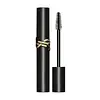What's inside
What's inside
 Key Ingredients
Key Ingredients

No key ingredients
 Benefits
Benefits

 Concerns
Concerns

 Ingredients Side-by-side
Ingredients Side-by-side

Water
Skin ConditioningAcrylates/Octylacrylamide Copolymer
Beeswax
Emulsion StabilisingButylene Glycol
HumectantVp/Hexadecene Copolymer
Glyceryl Stearate
EmollientCetearyl Alcohol
EmollientEuphorbia Cerifera Wax
Stearic Acid
CleansingMagnesium Aluminum Silicate
AbsorbentCopernicia Cerifera Wax
Aminomethyl Propanol
BufferingParaffinum Liquidum
EmollientCaprylyl Glycol
EmollientAcrylates/C10-30 Alkyl Acrylate Crosspolymer
Emulsion StabilisingPhenoxyethanol
PreservativeMica
Cosmetic ColorantCI 77891
Cosmetic ColorantIron Oxides
Water, Acrylates/Octylacrylamide Copolymer, Beeswax, Butylene Glycol, Vp/Hexadecene Copolymer, Glyceryl Stearate, Cetearyl Alcohol, Euphorbia Cerifera Wax, Stearic Acid, Magnesium Aluminum Silicate, Copernicia Cerifera Wax, Aminomethyl Propanol, Paraffinum Liquidum, Caprylyl Glycol, Acrylates/C10-30 Alkyl Acrylate Crosspolymer, Phenoxyethanol, Mica, CI 77891, Iron Oxides
Water
Skin ConditioningCI 77499
Cosmetic ColorantBehenyl Behenate
EmollientEthylenediamine/Stearyl Dimer Dilinoleate Copolymer
Skin ConditioningStyrene/Acrylates/Ammonium Methacrylate Copolymer
Cetearyl Alcohol
EmollientStearic Acid
CleansingPalmitic Acid
EmollientPvp
Emulsion StabilisingVp/Eicosene Copolymer
Aminomethyl Propanediol
BufferingPhenoxyethanol
PreservativeCaprylyl Glycol
EmollientButylene Glycol
HumectantMyristic Acid
CleansingSodium Laureth Sulfate
CleansingTetrasodium EDTA
Pentaerythrityl Tetra-Di-T-Butyl Hydroxyhydrocinnamate
AntioxidantPotassium Sorbate
PreservativeIris Florentina Root Extract
MaskingWater, CI 77499, Behenyl Behenate, Ethylenediamine/Stearyl Dimer Dilinoleate Copolymer, Styrene/Acrylates/Ammonium Methacrylate Copolymer, Cetearyl Alcohol, Stearic Acid, Palmitic Acid, Pvp, Vp/Eicosene Copolymer, Aminomethyl Propanediol, Phenoxyethanol, Caprylyl Glycol, Butylene Glycol, Myristic Acid, Sodium Laureth Sulfate, Tetrasodium EDTA, Pentaerythrityl Tetra-Di-T-Butyl Hydroxyhydrocinnamate, Potassium Sorbate, Iris Florentina Root Extract
Ingredients Explained
These ingredients are found in both products.
Ingredients higher up in an ingredient list are typically present in a larger amount.
Butylene Glycol (or BG) is used within cosmetic products for a few different reasons:
Overall, Butylene Glycol is a safe and well-rounded ingredient that works well with other ingredients.
Though this ingredient works well with most skin types, some people with sensitive skin may experience a reaction such as allergic rashes, closed comedones, or itchiness.
Learn more about Butylene GlycolCaprylyl Glycol is a humectant and emollient, meaning it attracts and preserves moisture.
It is a common ingredient in many products, especially those designed to hydrate skin. The primary benefits are retaining moisture, skin softening, and promoting a healthy skin barrier.
Though Caprylyl Glycol is an alcohol derived from fatty acids, it is not the kind that can dry out skin.
This ingredient is also used as a preservative to extend the life of products. It has slight antimicrobial properties.
Learn more about Caprylyl GlycolCetearyl alcohol is a mixture of two fatty alcohols: cetyl alcohol and stearyl alcohol. It is mainly used as an emulsifier. Emulsifiers help prevent the separation of oils and products. Due to its composition, it can also be used to thicken a product or help create foam.
Cetearyl alcohol is an emollient. Emollients help soothe and hydrate the skin by trapping moisture.
Studies show Cetearyl alcohol is non-toxic and non-irritating. The FDA allows products labeled "alcohol-free" to have fatty alcohols.
This ingredient is usually derived from plant oils such as palm, vegetable, or coconut oils. There is debate on whether this ingredient will cause acne.
Due to the fatty acid base, this ingredient may not be Malassezia folliculitis safe.
Learn more about Cetearyl AlcoholPhenoxyethanol is a preservative that has germicide, antimicrobial, and aromatic properties. Studies show that phenoxyethanol can prevent microbial growth. By itself, it has a scent that is similar to that of a rose.
It's often used in formulations along with Caprylyl Glycol to preserve the shelf life of products.
Stearic Acid is a fatty acid. It is an emollient, emulsifier, and texture enhancer.
As an emollient, stearic acid helps soften skin. It aids the skin's protective barrier by preventing water loss. It also provides a gentle cleansing effect without stripping away natural oils.
Stearic acid may also be used to enhance the texture of products. It can add volume and stabilize ingredients such as water and oil. This can help water and oil ingredients from separating.
Sources of stearic acid include animal or vegetable fats/oils such as coconut or shea. It can be naturally found in butter, cocoa butter, shea butter, vegetable fats, and animal tallow.
This ingredient may not be Malassezia folliculitis, or fungal-acne safe.
Learn more about Stearic AcidWater. It's the most common cosmetic ingredient of all. You'll usually see it at the top of ingredient lists, meaning that it makes up the largest part of the product.
So why is it so popular? Water most often acts as a solvent - this means that it helps dissolve other ingredients into the formulation.
You'll also recognize water as that liquid we all need to stay alive. If you see this, drink a glass of water. Stay hydrated!
Learn more about Water